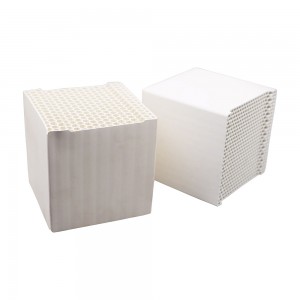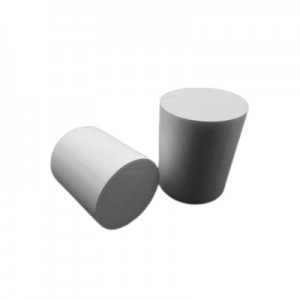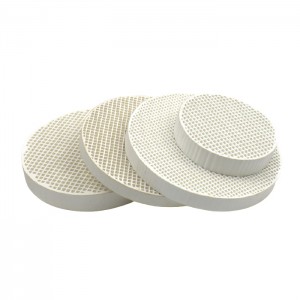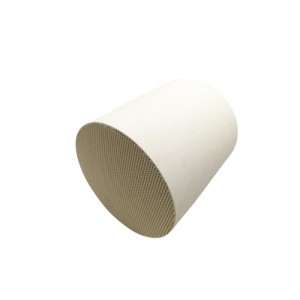Honeycomb Ceramic
-

RTO Heat Exchange Honeycomb Ceramic
Regenerative Thermal/Catalytic Oxidizer (RTO/RCO) are used to destroy Hazardous Air Pollutants (HAPs), Volatile Organic Compounds (VOCs) and odorous emissions etc, which are extensively applied in the fields of Automotive paint, Chemical industry, Electronic & Electric Manufacturing industry, Contact Combustion System, and so on. Ceramic Honeycomb is specified as structured regenerative media of RTO/RCO.
-

Catalyst carrier cordierite honeycomb ceramics for DOC
Ceramic honeycomb substrate (catalyst monolith) is a new kind of industrial ceramic product, as a catalyst carrier which are widely used in automobile emissions purifying system and industrial exhaust gas treatment system.
-

Infrared honeycomb ceramic plate for BBQ
Outstanding Strength Uniform radiant burning
Excellent thermal shock resistance Save up to 30~50% energy cost Burn without flame.
Quality raw materials.
Ceramic Substrate/ honeycomb in cordierite, alumina, mullite
Many sizes available.
Our regular size is 132*92*13mm But we can produce different sizes according to the customer’s oven, fully energy-saving and efficient combustion. -

Cordierite DPF Honeycomb Ceramic
Cordierite Diesel Particulate Filter(DPF)
The most common filter is made of cordierite. Cordierite filters provide excellent filtration efficiency, are relatively
inexpensive (comparison with Sic wall flow filter). The major drawback is that cordierite has a relatively low melting point. -

Thermal Storage Rto/Rco Honeycomb Ceramic as Catalytic Converter for Heat Recovery
It is a highly efficient organic waste gas treatment equipment. Its working principle is to heat the organic waste gas to above 760 degrees Celsius to oxidize and decompose the volatile organic compounds (VOCs) in the waste gas into carbon dioxide and water. The heat generated by the oxidation process is stored in a special ceramic heat storage body, which heats up the heat storage body to “storage heat”. The heat stored in the ceramic heat storage body is used to preheat the subsequent organic waste gas. This process is the “heat release” process of the ceramic heat storage body, thereby saving fuel consumption in the waste gas heating process.
